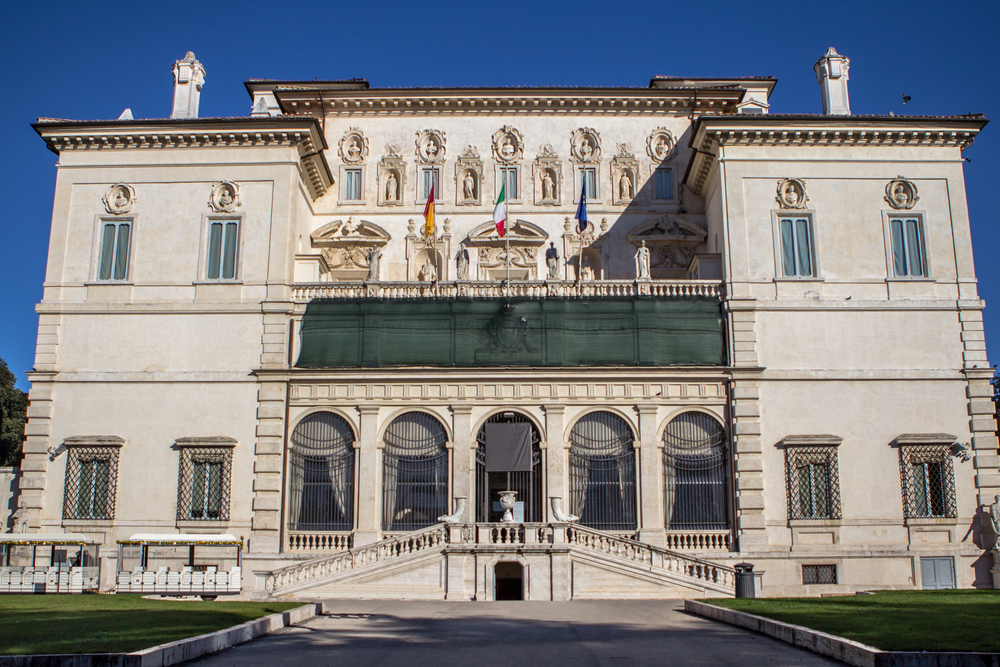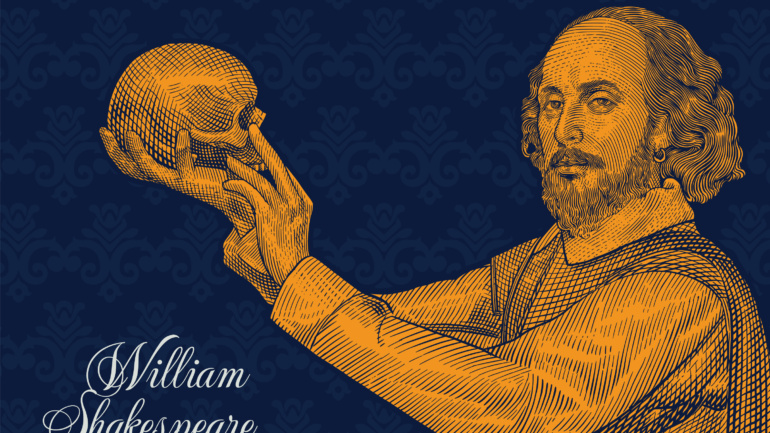Today, We Will Talk About Baroque Sculpture: The Only Master Worth Mentioning — Bernini
Bernini: The Shakespeare of Sculpture
- Bernini (1598–1680), known as the “Father of Baroque Art” and the “Shakespeare of Sculpture,” was the greatest artistic master of the 17th century. He achieved remarkable success in both sculpture and architecture and was also an excellent painter. Bernini’s art was full of creativity, reforming traditional artistic forms and expressing his unique style, which secured his unshakable status in the art world.
- Bernini, whose full name is Gianlorenzo Bernini, rose to fame at a young age. With an outgoing personality, he quickly gained the patronage and support of Cardinal Scipione Borghese shortly after his debut. By the age of 23, he was awarded a knighthood, and his artistic career was smooth sailing. Bernini’s achievements in sculpture were unparalleled, earning him the title of the “Michelangelo of the Baroque Era.” His works showcased the dynamic, rich, and intricate characteristics of Baroque art, making them of immense artistic value.
- Bernini preferred capturing moments over eternity in his sculptures. While Renaissance sculptures, represented by Michelangelo, often depicted serene and eternal states, Bernini took a different approach by capturing the fleeting moments of gesture, expression, and emotion. One of his most famous works, The Ecstasy of Saint Teresa, features a reclining nun and an angel holding a spear, portraying the moment the nun ascends to heaven and encounters the angel. The sculpture is full of movement and stimulates the imagination of the viewer.
- In The Ecstasy of Saint Teresa, Bernini vividly captured the contradiction of intense emotions and dynamic expressions. He paid great attention to portraying the nun’s facial expression, which appears unsettled, with her mouth slightly open and her brows furrowed, reflecting the blend of pain and ecstasy. Notably, the folds of the nun’s garments convey a sense of weightlessness, despite being sculpted from hard marble. This demonstrates Bernini’s extraordinary skill in transforming solid materials into lifelike textures.
- Another iconic work that captures a fleeting moment is Bernini’s David. Unlike Michelangelo’s serene and poised David, Bernini’s version depicts the young hero bending forward, ready to launch his attack. The alignment of David’s head and feet forms a diagonal cross with the positioning of his arms, creating an unstable, dynamic composition full of dramatic tension. It feels as though David is about to hurl the stone in the next instant.
- Bernini was a master at using hard materials to express softness. In The Rape of Proserpina, Bernini depicted the moment when Pluto, the god of the underworld, wraps his arms around the beautiful Persephone, attempting to abduct her. When capturing the softness of the maiden’s skin, Bernini skillfully carved Pluto’s fingers sinking into her flesh, highlighting her delicate body. This detail became the highlight of the sculpture, showcasing Bernini’s ability to depict the softness of the human form. Similarly, in The Veiled Woman, Bernini portrayed a woman covered by a delicate, lifelike veil, with the thin fabric sculpted with astonishing realism.
- Bernini also pioneered a new form of sculpture — garden sculpture. Unlike Renaissance sculptures, which existed as standalone works meant for viewing, Bernini gave sculptures functional and aesthetic purposes. His most famous garden sculpture is the Fountain of the Four Rivers in Rome. Water flows from the sculptures, combining functionality with artistic appreciation. The fountain also holds symbolic meaning, as the “four rivers” represent the Nile for Africa, the Ganges for Asia, the Danube for Europe, and the Río de la Plata for the Americas. The obelisk at the top signifies the glory of Jesus spreading across the world.
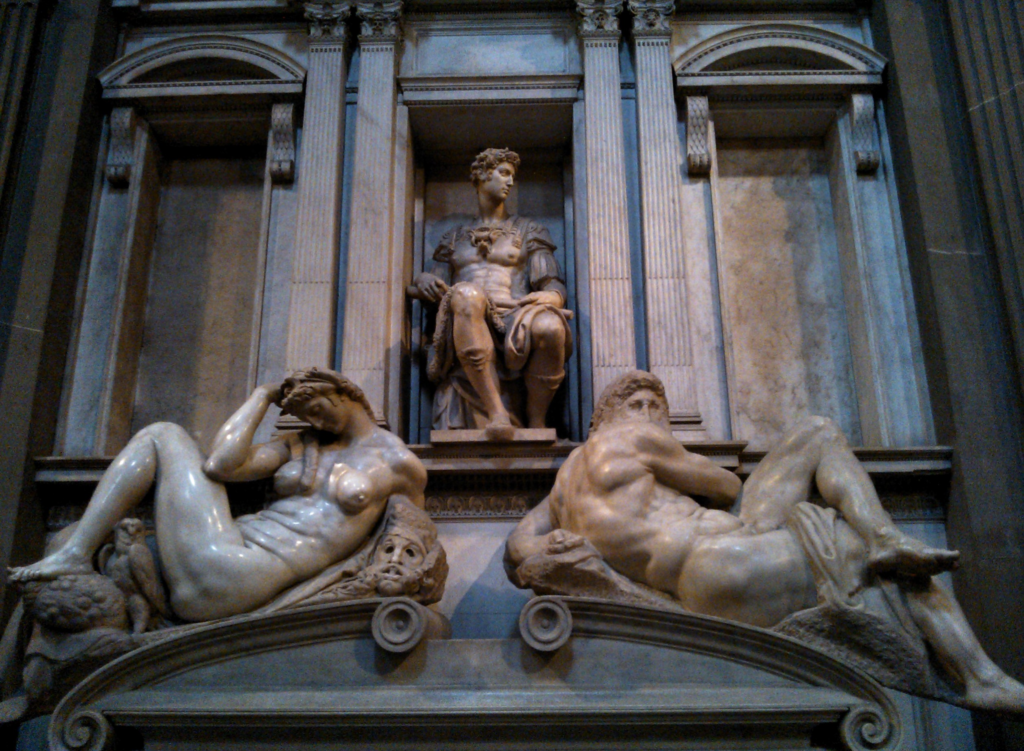
Michelangelo – The Group Sculpture Day, Night, Dawn, and Dusk
Located in the Medici Chapel, this sculpture reflects the Renaissance pursuit of eternal states in art.
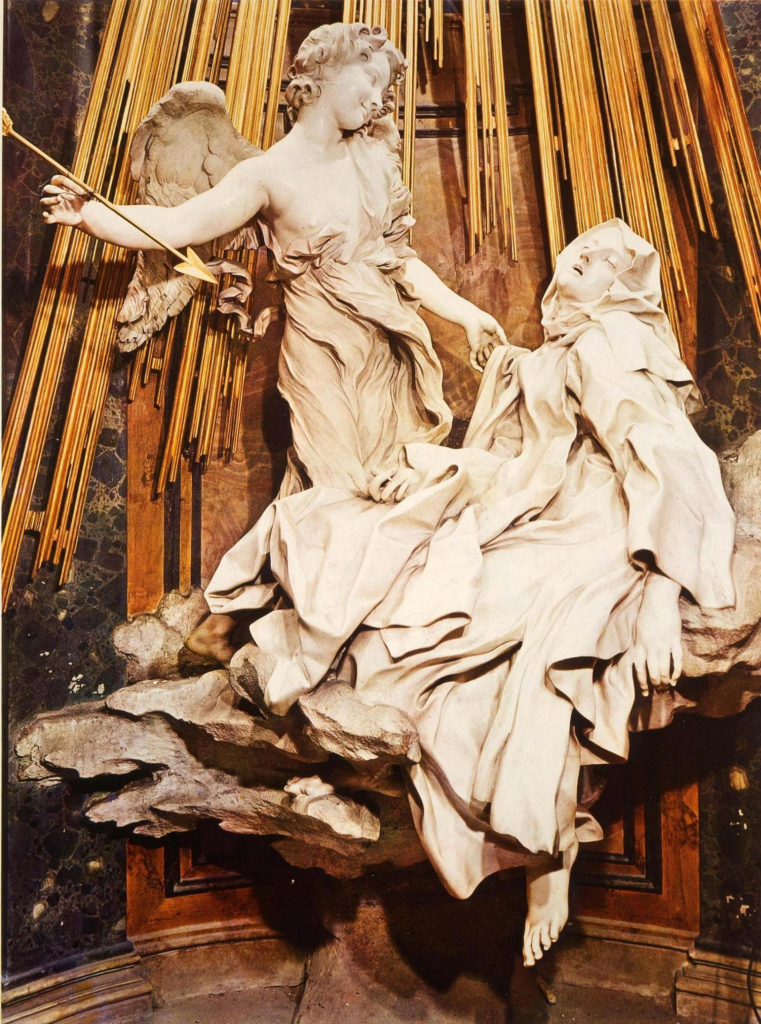
Bernini – The Ecstasy of Saint Teresa
Depicts the moment when the nun, about to ascend to heaven, floats upward and encounters an angel.
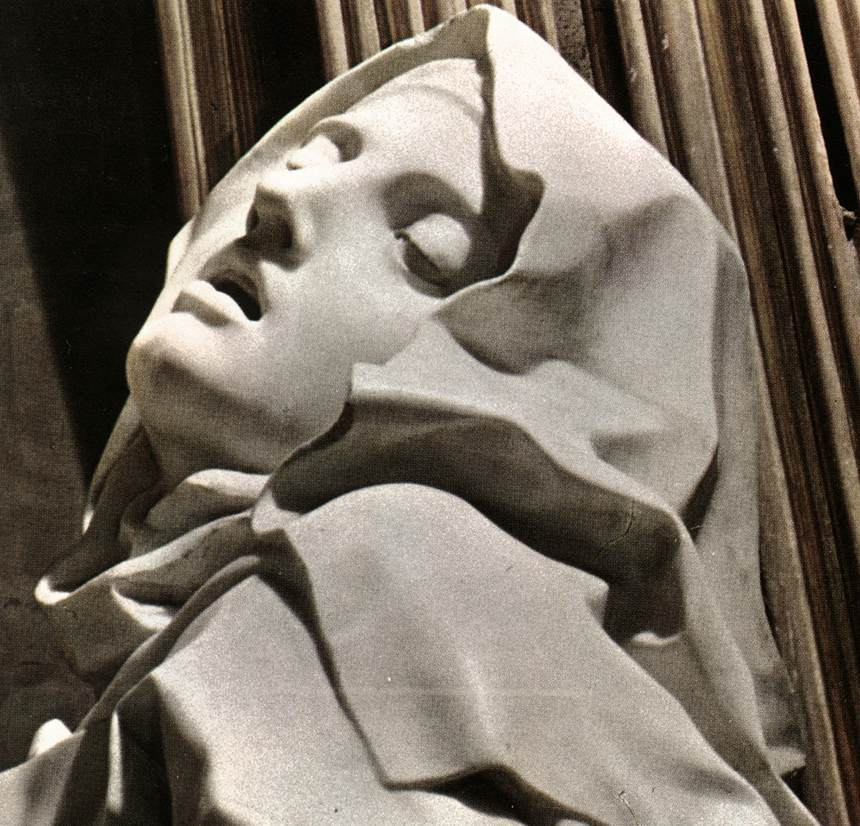
Bernini – Close-up of The Ecstasy of Saint Teresa
Bernini paid great attention to the expressions of his figures. The nun’s slightly open mouth and furrowed brows convey a blend of pain and ecstasy.
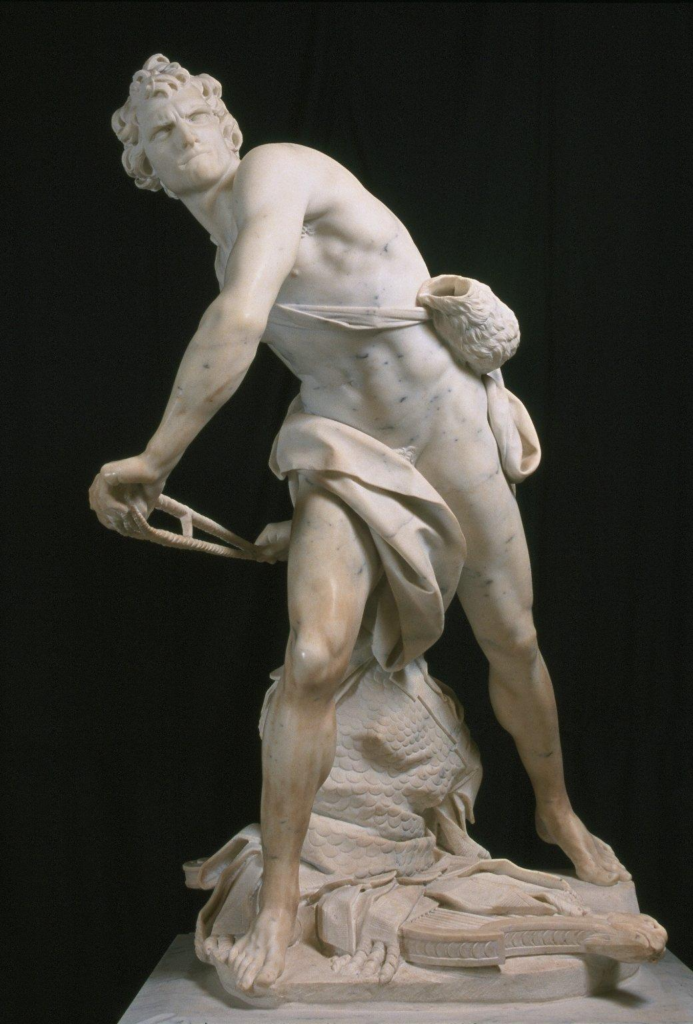
Bernini – David
The alignment of David’s head and feet forms a diagonal cross with the positioning of his arms, providing dynamic balance and support for the entire sculpture.
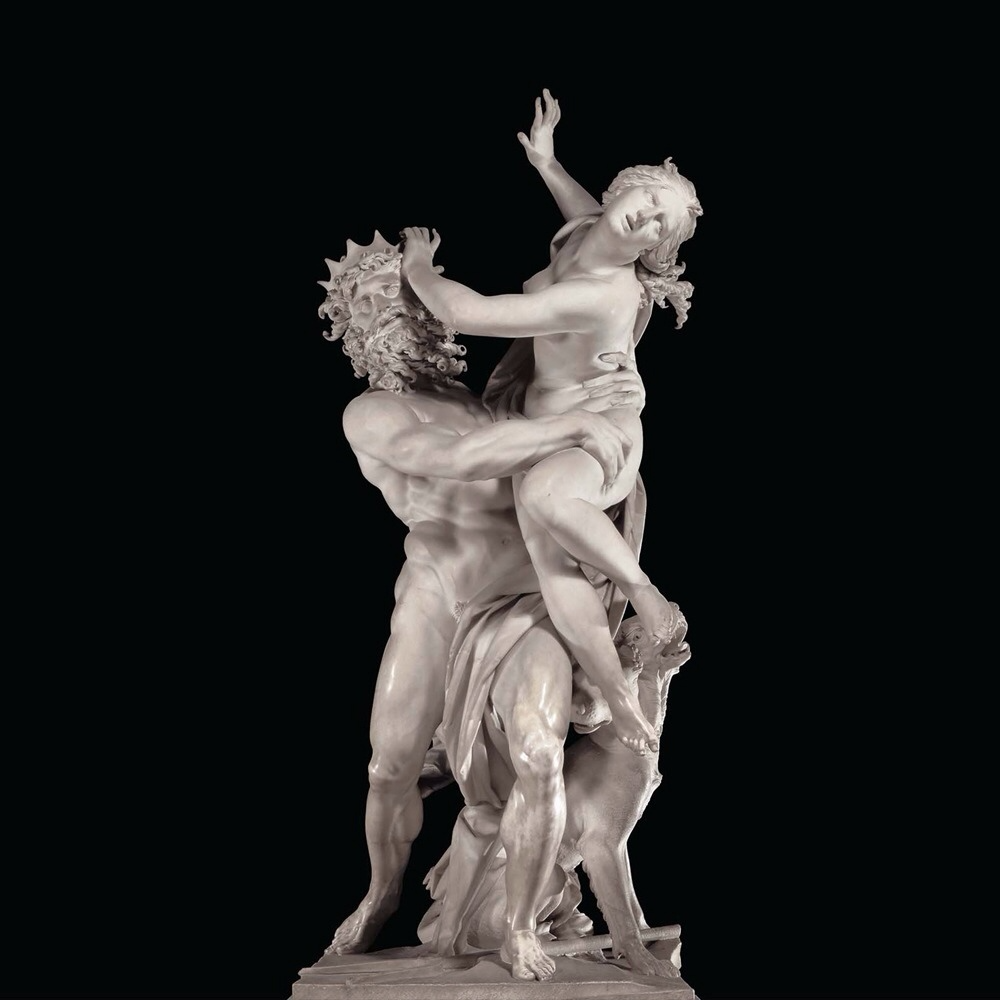
Bernini – The Rape of Proserpina
Depicts the moment when Pluto, the god of the underworld, wraps his arms around the beautiful Persephone, attempting to abduct her.
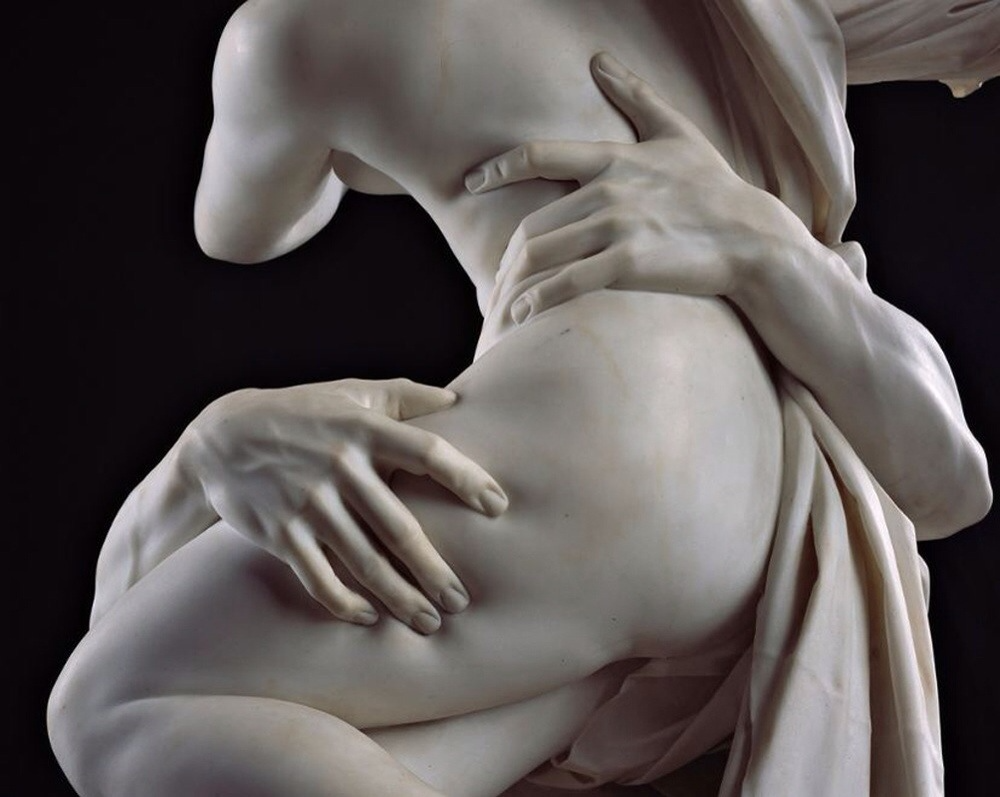
Bernini – Close-up of The Rape of Proserpina
A striking detail is how Pluto’s fingers press into Persephone’s flesh, vividly conveying the softness of her body.
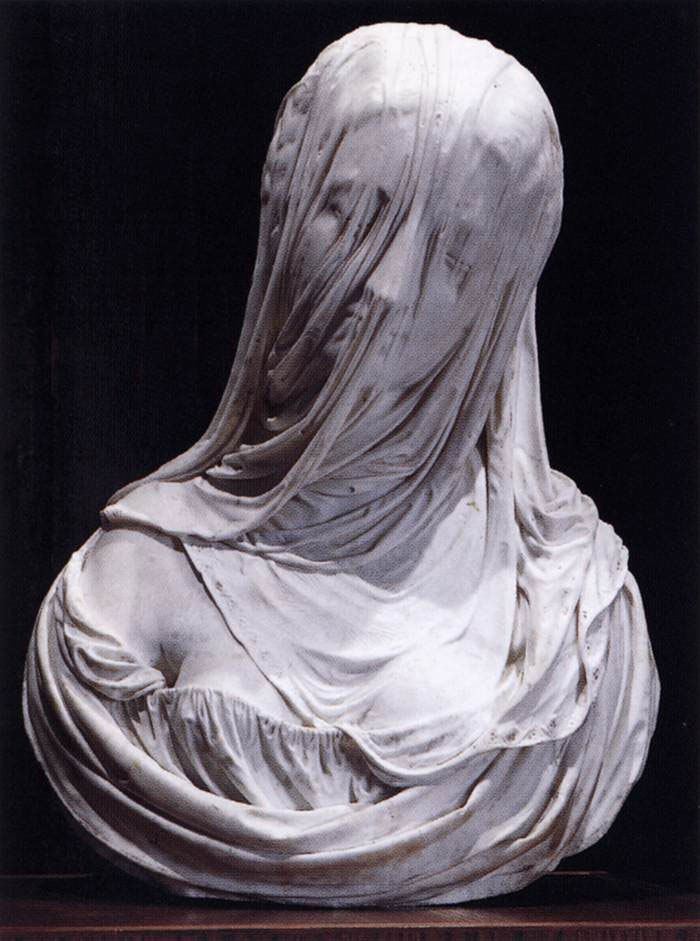
Bernini – The Veiled Woman
The softness of the veil is exquisitely rendered, with the delicate fabric appearing lifelike despite being carved from hard marble.
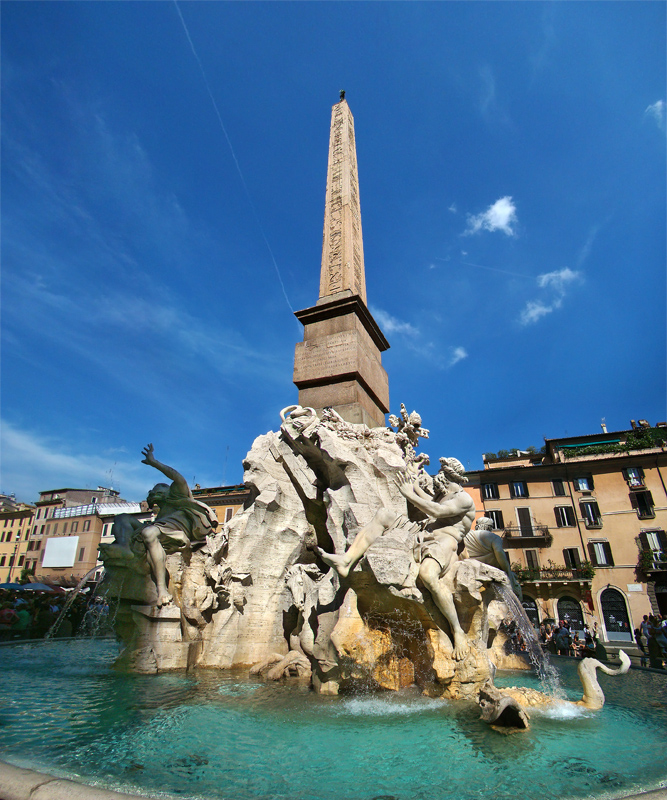
Bernini – The Fountain of the Four Rivers
The four rivers symbolize the continents, while the obelisk at the top represents the radiance of Jesus spreading across the world.r mattis, pulvinar dapibus leo.
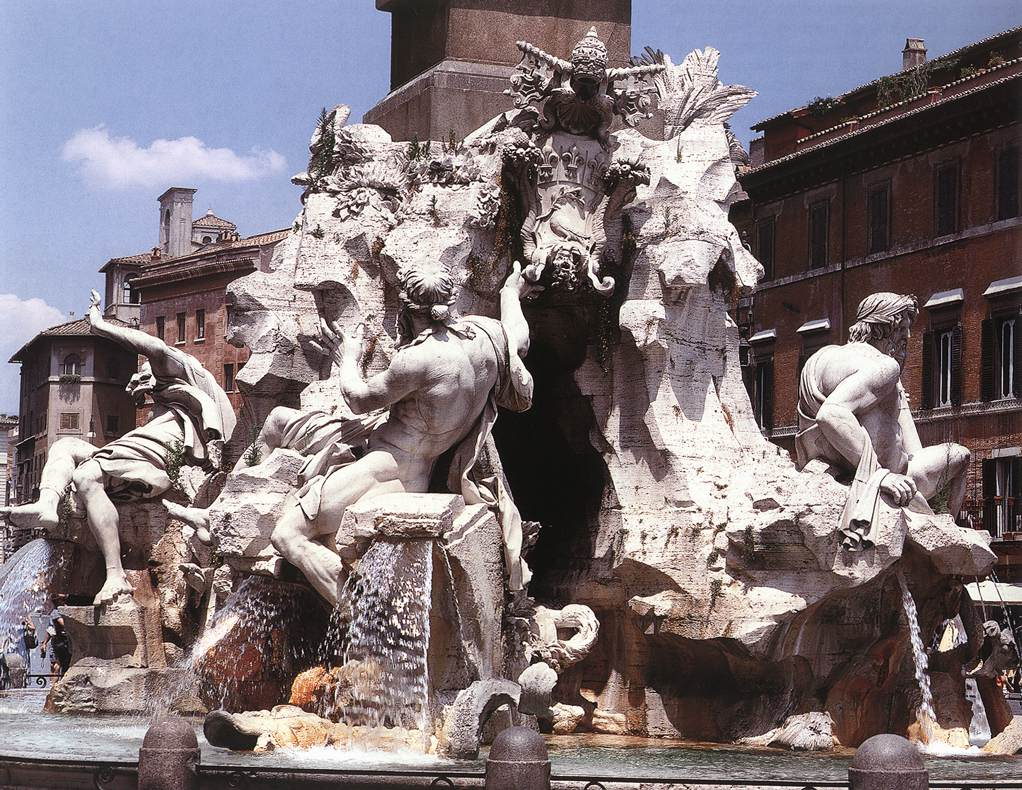
Bernini – The Fountain of the Four Rivers
Water flows from the sculptures, combining functionality with artistic beauty and symbolic meaning.
Tip: Borghese Gallery
The Borghese Gallery (Galleria Borghese) is an art museum in Rome, Italy, known for its collection of Renaissance and Baroque masterpieces. The gallery was historically the residence of the Borghese family, and Cardinal Scipione Borghese, a patron of Bernini and an avid collector, contributed greatly to the gallery’s impressive collection. Located within the Borghese Gardens on the Pincian Hill, the museum is highly recommended for art enthusiasts.
